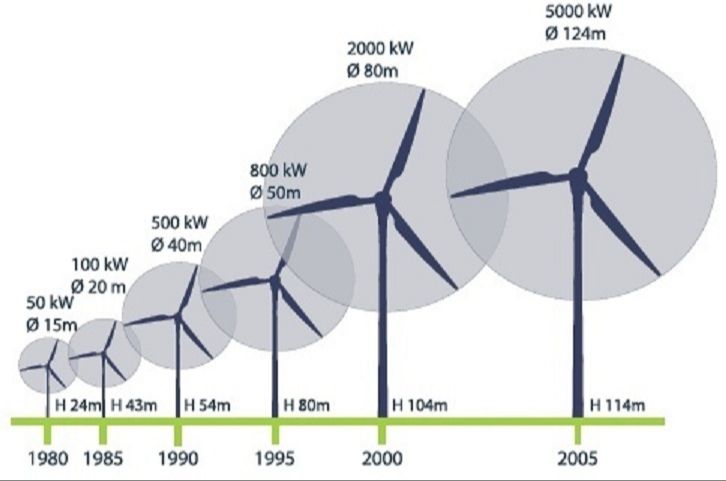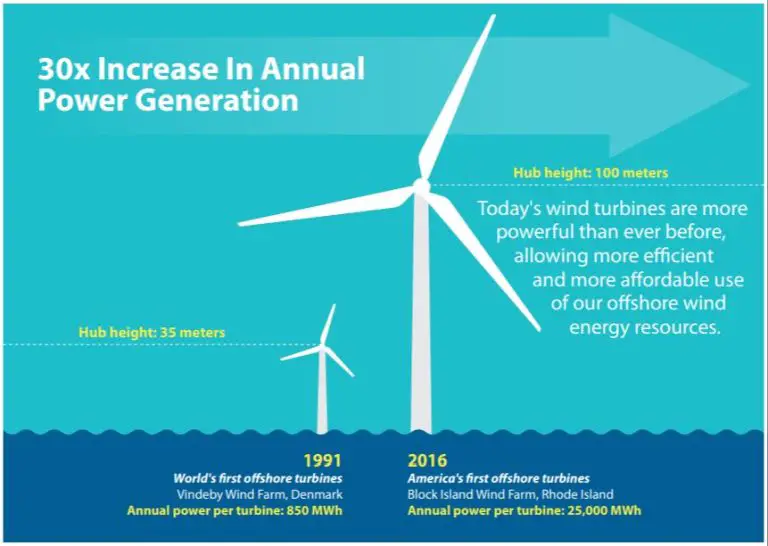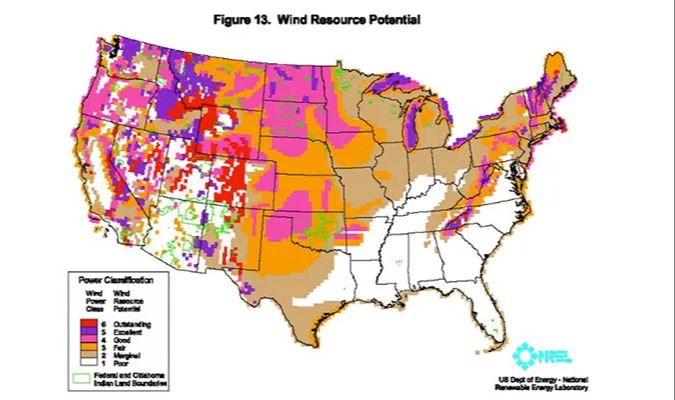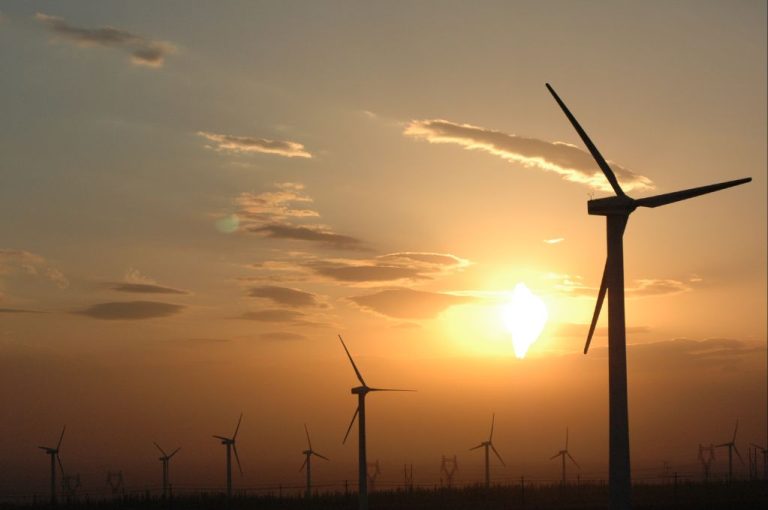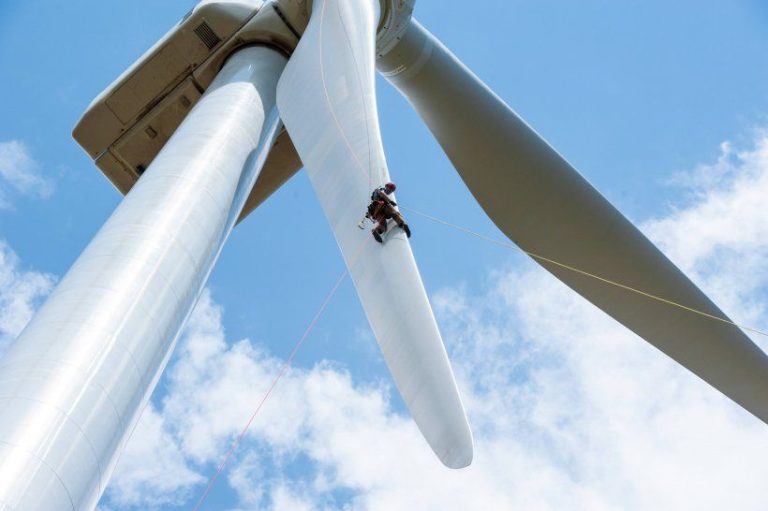Are There Wind Turbines Off The Coast Of Virginia?
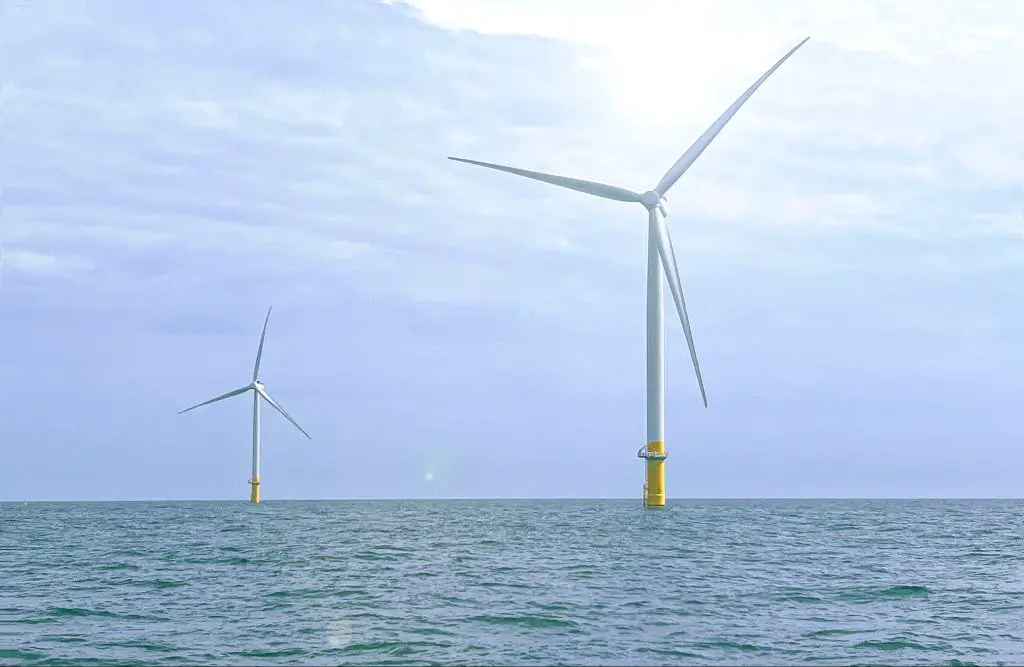
The goal of this article is to provide an overview of offshore wind energy initiatives off the coast of Virginia, focusing specifically on whether there are currently any operational wind turbines generating electricity. Virginia has emerged as a leader in US offshore wind development, with major projects underway that will install utility-scale wind turbines in federal waters off the coast. While no turbines are yet fully operational, the first offshore wind project in federal waters is under construction and expected to begin generating electricity by late 2026. This article will provide background information on the rise of offshore wind globally and in the US, discuss Virginia’s offshore wind initiatives, examine Dominion Energy’s Coastal Virginia Offshore Wind commercial project, and assess the environmental and economic impacts these wind farms may have for the state.
Background on Offshore Wind
Offshore wind farms are wind turbines set up in bodies of water, usually at sea (Wikipedia, 2023). They are located offshore where wind speeds are stronger and more consistent than on land, allowing the turbines to generate more clean electricity. Offshore wind turbines have become increasingly common globally over the past couple decades. In an offshore wind farm, multiple turbines are constructed together in an array to produce commercial-scale amounts of renewable energy. The electricity generated is transported back to shore via underwater cables and connected to the power grid.
Global Growth of Offshore Wind
Offshore wind has seen rapid growth globally in recent years. According to the Global Wind Energy Council’s Global Offshore Wind Report 2023, total global offshore wind capacity reached 64.3 GW across 19 countries by the end of 2022. This represents a growth of 21% from 2021. Offshore wind now accounts for 7.1% of total global wind energy capacity.
China continues to lead in offshore wind installations, accounting for over half of new capacity in 2022. The UK and Germany follow behind with over 10 GW each of installed offshore wind. Other top markets include Denmark, the Netherlands, Belgium and Vietnam. The Asia-Pacific region saw the most growth in 2022, driven by China. Europe still retains the highest overall share of global offshore wind at over 75% of capacity.
Projections estimate over 380 GW of new offshore wind capacity will be added globally in the next decade, with annual installations reaching over 60 GW by 2030. Key drivers for growth include falling costs, supportive government policies and increased urgency to reduce carbon emissions and expand renewable energy.
US Offshore Wind Development
The United States currently has only two small operational offshore wind farms, the 30 MW Block Island Wind Farm off the coast of Rhode Island which began commercial operation in 2016, and the 12 MW Coastal Virginia Offshore Wind project which came online in 2020 [1]. However, there are over 20 offshore wind projects in various stages of development along the East Coast and West Coast, representing over 25 gigawatts of planned capacity. Many states have set offshore wind energy goals including New Jersey (7.5 GW by 2035), New York (9 GW by 2035), Maryland (1.2 GW by 2030), and Virginia (5.2 GW by 2034) [2]. While the US has lagged behind Europe and Asia in developing offshore wind, growth is expected to accelerate rapidly in the coming decade.
Virginia Offshore Wind Initiatives
The state of Virginia has been active in recent years in implementing policy initiatives to promote offshore wind development. In 2020, Virginia enacted the Virginia Clean Economy Act which included a goal that 5,200 megawatts of offshore wind energy be developed by 2034 (Virginia Department of Energy). This policy aim makes Virginia a leader in offshore wind targets among U.S. states.
Virginia has also passed other legislation focused on spurring offshore wind in an equitable and sustainable manner. In 2023, Virginia enacted S.B.1441 which established a Clean Energy Advisory Board and Offshore Wind Development Authority to help ensure that offshore wind projects create quality jobs and bolster underserved communities while also protecting marine ecosystems and fisheries (NCEL). The state’s policy initiatives demonstrate a commitment to growing the offshore wind industry in a responsible and inclusive way.
Dominion Energy’s Coastal Virginia Offshore Wind Project
Dominion Energy is developing an offshore wind project called Coastal Virginia Offshore Wind (CVOW), which will be the first offshore wind farm in the mid-Atlantic region. The project consists of two 6-megawatt wind turbines located 27 miles off the coast of Virginia Beach on 2,135 acres leased from the Bureau of Ocean Energy Management (BOEM).
The two wind turbines are expected to generate enough energy to power 3,000 homes at peak output. They will be installed on monopile foundations and use Siemens Gamesa 6 MW turbines. Construction is expected to begin in 2024 with commercial operations starting in 2026.
The project is part of Dominion Energy’s goal to reach net zero carbon and methane emissions by 2050. It is the first step in developing 2,600 megawatts of commercial offshore wind in this area by 2026, which will be capable of powering up to 660,000 homes. Dominion Energy received approval from the State Corporation Commission to build CVOW in November 2020.
Sources:
Coastal Virginia Offshore Wind
Environmental Impact
Offshore wind farms have various effects on marine wildlife. Studies have found that wind turbines may act as artificial reefs, increasing the diversity and quantity of marine organisms in surrounding areas (Galparsoro, 2022). This can benefit some species like shellfish and crustaceans. However, the structures may negatively impact migratory birds and marine mammals (UMCES, n.d.). The turbines create underwater noise and electromagnetic frequencies that can disrupt wildlife behaviors. Birds and bats may also collide with the rotating blades. More research is still needed to fully understand the long-term ecological impacts.
Galparsoro, I. (2022). Reviewing the ecological impacts of offshore wind farms. Nature Reviews Earth & Environment. https://www.nature.com/articles/s44183-022-00003-5
UMCES. (n.d.). Wind Energy & Environmental Impacts. University of Maryland Center for Environmental Science. Retrieved from https://www.umces.edu/wind-energy
Economic Impact
The offshore wind industry has the potential to generate significant economic benefits for coastal communities in Virginia. According to a report by the American Wind Energy Association, developing 30 GW of offshore wind capacity along the East Coast by 2030 could support up to 83,000 jobs and deliver over $25 billion in annual economic output [1]. The jobs created would be in manufacturing, construction, operations, maintenance, and other support services.
In Virginia specifically, Dominion Energy’s 2.6 GW Coastal Virginia Offshore Wind project is projected to create over 900 direct jobs and thousands of indirect jobs during construction and operations [2]. The project is also expected to generate $143 million in economic benefits annually for Virginia communities. This includes increased local spending, tax revenue, and lease payments to the state.
Offshore wind development can provide a major boost to coastal economies through new investments, workforce development, and long-term employment opportunities. As the offshore wind industry expands in Virginia and other states, it is positioned to become an important driver of job growth and economic activity.
Community Feedback
Local residents have had mixed reactions to the proposed offshore wind project off the coast of Virginia. Some view it as an important step towards clean energy and reducing dependence on fossil fuels. However, others have raised concerns about how it may impact coastal views, tourism, and marine ecosystems.
Many residents in Virginia Beach support offshore wind as a way to combat climate change through renewable energy. The city council unanimously endorsed Dominion’s project in 2021. Supporters point to job creation and economic benefits for the region. Environmental groups like the Sierra Club and League of Conservation Voters have also advocated for offshore wind farms.
However, opposition groups like Citizens for Responsibility and Ethics in Washington (CREW) have raised objections. They argue the turbines would interfere with naval training and clutter ocean views. CREW filed a lawsuit in 2021 alleging the project did not undergo proper environmental impact assessments. Some local homeowners worry property values may decline due to obstructed coastal views. Commercial fisheries have concerns about navigating dense turbine fields.
As the project moves forward, public feedback will continue shaping the development process. Striking the right balance between clean energy, economic gains, and community interests remains an important goal for policymakers and Dominion Energy.
Conclusion
Offshore wind power is still in the early stages of development off Virginia’s coast, but momentum is clearly building. Dominion Energy’s Coastal Virginia Offshore Wind project, which is expected to be completed in 2026, will be the largest offshore wind farm in the country. While some environmental groups and local communities still have concerns, there are many potential benefits, including massive amounts of clean energy, job creation, and economic growth for the state. If the pilot project goes well, we are likely to see continued expansion of offshore wind in Virginia’s waters in the coming decades. Though the state is still new to harnessing wind power offshore, the steady progress so far indicates an active future for offshore wind energy here.

